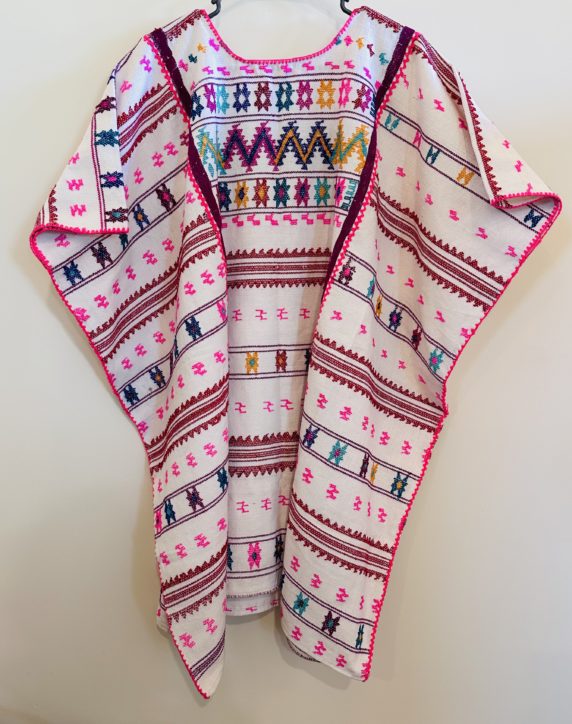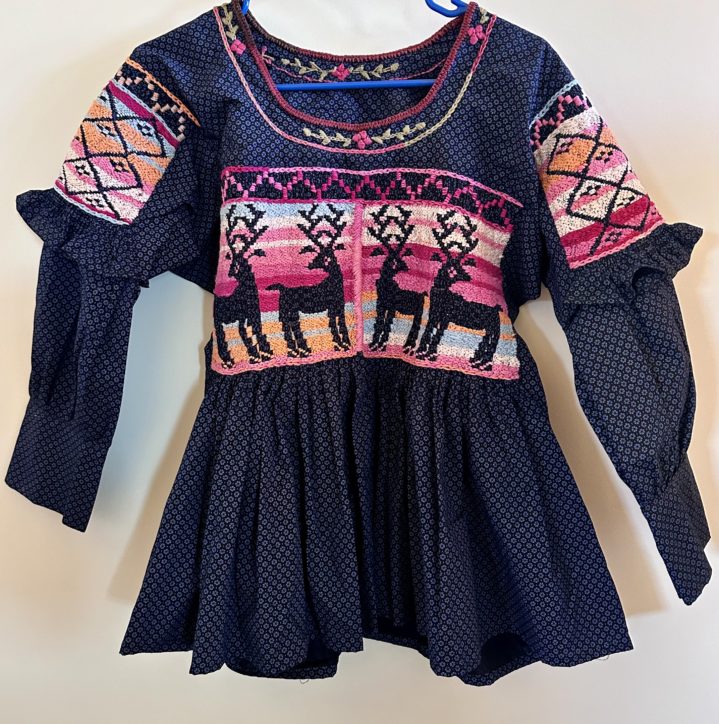Jump into the magic of Oaxaca, Mexico, from January 11 to 17, 2025. During this six-night, seven-day immersion tour you will discover (almost) everything this UNESCO World Heritage city has to offer. You will take a hands-on cooking class from a traditional chef who uses an outdoor wood-fired kitchen to prepare acclaimed pre-Hispanic dishes, visit the bustling Mercado de Abastos to shop, taste and savor artisanal mezcal especially distilled from rare wild agave, visit outstanding makers of craft and textiles that distinguish Oaxaca and elevate her above and beyond any place in the world, sample street tacos, take a graphic arts and printmaking workshop from a renowned artist, and enjoy the best that Oaxaca has to offer. Recap it all at our Grand Finale Dinner at one of Oaxaca’s top restaurants. A perfect Oaxaca Visitor’s Tour.
We will be based in one of Oaxaca’s most trendy, vibrant neighborhoods where murals will dazzle you, coffee bars will delight you, restaurants will tempt you, and galleries will excite you.
PRELIMINARY ITINERARY
Day 1 – Saturday, January 11. Arrive to Oaxaca, check into our comfortable hotel located in one of the city’s most captivating neighborhoods filled with murals, galleries, coffee bars. Meet for a no host dinner at 6:00 pm. We suggest you arrive before 3 p.m. today. Meals included: none.



Day 2 – Sunday, January 12. Today we start with an orientation and introduction during breakfast. Then we get in the van for a short trip to Santa María Atzompa, where we will meet a traditional cook who specializes in pre-Hispanic food prepared in an outdoor smoke kitchen called Cocina de Humo. First, she takes us on a culinary shopping tour of Mercado de Abastos, the largest Oaxaca market, to procure all the ingredients we need. After our workshop and delicious lunch, we will visit our friend Rufina who specializes in making pottery with lead-free glazes and oxygen reduction techniques. We will return to the hotel in time for you to enjoy Margaritas and dinner on your own. Meals included: breakfast and lunch.



Day 3 – Monday, January 13. After breakfast, our luxury van takes us deep into the Ocotlan Valley. We call this the Handcraft Route since it takes us through black pottery studios, embroidery workshops, and wood-carving spaces. We introduce you to the famed painter Rodolfo Morales who created extraordinary murals of rural life in the municipal building and then move on to meet a cooperative of embroiderers where we will learn about the different techniques used for ceremonial garments in San Antonino Castillo Velasco. Our lunch is at an outdoor kitchen in San Martin Tilcajete, one of our favorite spots for relaxed al fresco dining. Meals included: breakfast and lunch.
Day 4 – Tuesday, January 14. Wear your comfortable shoes for a city walking tour – we will cover a lot of territory! First, we stop to meet our artist friends at a printmaking collective gallery, learn about the rich graphic art movement in Oaxaca, and take a deep dive into learning more about lithography by taking a workshop. We guide you every step of the way. After a lunch of street tacos at one of our favorite taquerias, we recharge and refresh, then carry on to the Benito Juarez Market, the Museo Textil de Oaxaca, and a noted folk art gallery. Meals included: breakfast and lunch.




Day 5 – Wednesday, January 15. Weaving is Us! Today we travel to Teotitlán del Valle, the famed tapestry weaving village forty minutes outside the city to meet our family of weavers who create outstanding traditional and contemporary designs using all natural, sustainable dyes. Then, we visit a cooperative of women who specialize in making bags and purses from leather and tapestries. After lunch on the way to Mitla, we will meet up with our friend Arturo for a demonstration on flying shuttle land back strap loom weaving techniques. Home goods are his speciality!
Then we will stop at our favorite Palenque – the distillery — to learn everything about how artisanal mezcal is made, ending our day with a tasting of rare wild and espadin agave spirits. Meals included: breakfast and lunch.



Day 6 – Thursday, January 16. After breakfast you are on your own to explore the city at your leisure until we meet at a top-rated Oaxaca restaurant for our Grand Finale Dinner. Meals included: breakfast and gala dinner.
Day 7 – Friday, January 17. Depart to home. We will help you arrange transportation at your own expense to the Oaxaca airport, or extend your stay independently, or add-on a one- to three-day natural dye workshop (lodging not included). Meals included: breakfast.
What’s Included:
- 6 nights lodging at a comfortable hotel in the heart of one of Oaxaca’s most artistic neighborhoods
- 6 breakfasts
- 4 lunches
- 1 Gala Grand Finale Dinner with complimentary Margarita
- Luxury transportation to artisan villages
- Cocina de Humo cooking class
- Printmaking workshop
- Mezcal tasting
- Demonstrations and market visits
- An immersion experience beyond your dreams!
Tour Cost:
$2,790, Single—one-traveler in room with one bed and private bath
$2,190, Double—two travelers in room with either two beds or one Queen or King bed, private bath
Add 10% for a ground floor room and eliminate the stairs
Discounts: Oaxaca snowbirds and residents with your own lodging, take $500 off tour cost!
Reservations and Cancellations. Two easy steps.
- Complete this REGISTRATION FORM and email to Norma Schafer
- Send a $500 non-refundable deposit (first payment) to guarantee your place.
The balance is due in two equal payments. The second payment of 50% of the balance is due on or before September 1, 2024. The third payment, 50% balance, is due on or before November 15, 2024. We accept payment using Zelle cash transfer or a credit card with Square. For a Zelle transfer, there is no service fee. We add a 4% service fee to use Square. We will send you a request for funds to make your reservation deposit when you tell us you are ready to register. Please tell us how your account is registered (email or phone number).
After November 15, 2024, there are no refunds. If you cancel on or before November 15, 2024, we will refund 50% of your deposit received to date (less the $500 non-refundable deposit). After that, there are no refunds UNLESS we cancel for any reason. If we cancel, you will receive a full 100% refund.
Required–Travel Health/Accident Insurance: We require that you carry international accident/health insurance that includes $50,000+ of emergency medical evacuation insurance. Check out Forbes Magazine for best travel insurance options. https://www.forbes.com/advisor/travel-insurance/best-travel-insurance/
Proof of insurance must be received at least 45 days before the tour start date.
Add from 1 to 3 days of a natural dye workshop either before or after the tour for a deeper dive into textile arts. Work with indigo, cochineal, wild marigold, tree bark and other plant dyes. Create your own sampler and record formulas to carry home with you.









































